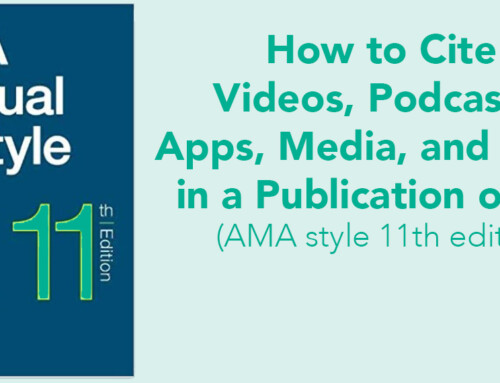
As part of the ALiEM Faculty Incubator Program, Dr. Anthony Artino, Deputy Editor of the Journal of Graduate Medical Education (JGME) and Assistant Editor for Academic Medicine participated in a Google Hangout with Drs. Antonia Quinn and Teresa Chan in which he provided expert advice for responding to editor and peer reviewer comments on your journal manuscript submission. This was the focus of the second half of the webinar panel discussion starting at the 28-minute mark. His advice and best practices are summarized below.
Outline for the Google Hangout
- 28:00 What is the best way to respond to a review?
- 29:07 Why the editor is always right
- 31:04 Ten tips for the author
- 31:41 Revise and resubmit is good news
- 32:45 Why accept with no revisions is a red flag
- 33:12 Editors are the gatekeepers
- 33:34 Don’t be a jerk
- 35:29 How to address reviewer comments in an organized fashion
- 37:30 Utilizing grids for the revision process
- 40:07 How and when to seek clarification from the editor
- 43:03 How to be persistent at getting your work out there
- 44:34 Rejection happens
- 49:00 When should you throw in the towel?
- 51:00 Disruptive publication models
3 Principles in Responding to Peer Review
1. Revisions result in a better paper.
Even if it is difficult to see at the time, published versions of papers are always better than the drafts.
2. Editors and reviewers are always right.
There sometimes are reviewers who are grumpy or unkind, though hopefully, the editors are handling that. Setting that aside, if you take the perspective that the reviewers are always right, it will help steer you towards the desired result, which is the best possible paper. Identifying problems before publication is the goal, and the reviewers are trying to helping authors achieve this.
3. Health professions education is a small world.
There is a relatively small pool of reviewers, many of whom are shared by multiple journals. As an author, it is vital to be nice and respectful when responding to reviewers. If you have a career in this arena, you will interact with the same people repeatedly and you want those interactions to be positive. Don’t send an unchanged paper to a subsequent journal because you may get the same reviewer and they will want to know that you have made recommended changes to improve the manuscript.
10 tips for authors when responding to a manuscript review
1. Take time to grieve.
You have worked hard on your project. It is common to go through a minor (or major) version of the Kubler-Ross stages of grieving.1 Give yourself time to do this before responding to the review.
2. Engage the posse.
Use your writing team. First authors do not have to do everything. So consider engaging members of the team to tackle revisions. They may be able to take criticism less personally.
3. Expect revisions.
Having a manuscript “accepted without revisions” is actually a red flag. Either you didn’t reach far enough or you may have encountered a predatory journal (more on this later in the post). Go into the project expecting revisions and consider it a win to get feedback on your paper. Longer comments mean someone was interested enough in your paper to give you many ideas for improvement.
4. Remember the rules of kindergarten.
Do your best. Be honest. Use kind words.
All of these lessons are valuable lifelong messages. There is an inherent power differential between authors and reviewers/editors. While being nice may not solve publication woes, being difficult can certainly add extra headache. Be reflective, rational, and respectful in your responses.2
5. Control your emotions.
Beware of “reply” versus “reply all”. Remember that nothing on the internet is really private and don’t write emails that you wouldn’t want to have to read aloud in public later.
6. Make it easy to say yes.
Use an organized and clear method to address comments from the reviewers. A grid format can be very helpful where the reviewer comment is in the left column and author responses in the right column. Acknowledge the feedback, include what was edited, and direct the editor to where that change can be found in the paper.
7. Engage in the peer-review process.
Invite trusted people to read your paper before sending it out the first time, then have them re-read the paper after your revisions.
8. When needed, get clarification.
It is acceptable practice to ask for clarification. It can be particularly useful if one reviewer suggests a change that you feel conflicts with another reviewer’s suggested change. It is also acceptable to decline some suggestions as long as you explain your rationale. Because this does risk having to re-revise or getting rejected, this approach should be considered carefully.
9. Carefully review re-submissions to other journals.
Make sure you change editor names and journal names when re-submitting. If you were careless in your cover letter, why would an editor think you were meticulous in your manuscript? Your paper may be seen by someone that has already viewed the paper, so fix problems before re-submitting.
10. Be persistent.
Keep working to improve your manuscript. Be realistic about your journal choice.
Rejection happens
Papers will be rejected. When this happens, consider objectively if there are any fatal flaws. Ask yourself if the project needs to be reworked into a different kind of article. The necessary level of evidence and standards may be different for various types of scholarship. Ask yourself if you’re targeting the right audience. A subspecialty journal may find something interesting that a more general journal doesn’t, and vice versa.
When to throw in the towel
- Not publishing is better than going to a predatory journal. Predatory journals are a hindrance to success. They sacrifice quality and fail to adhere to accepted standards of scholarship. Some of them even deliberately mislead authors regarding impact factors, readership, or indexing. Affiliation with these unethical journals can have negative consequences to the authors, most notably in regards to promotion and tenure. They should be avoided at all costs.
- Paying money to publish your manuscript is NOT the same as a predatory journal. There are journals who charge open access fees as part of their financial structure. These journals are still utilizing standard peer review models and ask for fees only after a project meets publication criteria.
- Don’t throw in the towel. There are so many options now that it is rarely worth discarding your work altogether.
References
- 1.Kübler-Ross E. On Death and Dying. New York: Scribner; 1969.
- 2.Joireman J, Van Lange P. How to Publish High-Quality Research. Washington DC: American Psychological Association; 2015.




